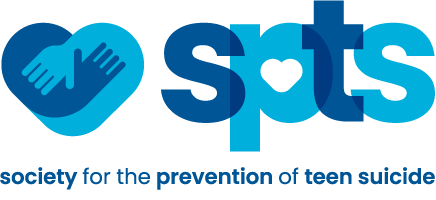There are three main arguments in response to this myth:
1. Talking about suicide will not plant the idea in teen’s heads because they are already well aware of suicide from their experiences with suicidal peers and from things they have been exposed to in the media.
2. Over the course of 30 years of hotline experience and 20 years of school-based suicide prevention programming, there has never been a case of planting the idea of committing suicide. The Centers for Disease Control and Prevention has clearly stated this:
“There is no evidence of increased suicide ideation or behavior among program participants.”
“Furthermore, numerous research and intervention efforts have been completed without any reports of harm.”
3. There have been several evaluations of school-based programs that show increased likelihood that program participants will tell an adult about a suicidal peer or will report suicidal thoughts as compared with controls.
Lastly, there have also been two long term follow-up studies in counties where suicide prevention programs were provided in nearly all county schools over a period of years that show reductions in youth suicide rates in the targeted county, while state rates remained unchanged or increased for the same period of time.
Remember, school-based suicide prevention programs are not primarily aimed at suicidal feelings per se, but instead emphasize competencies involved in obtaining help, knowing suicide signs, myths, and where to find available resources; and, most importantly, resolving to take action for one’s self or a peer. Also, classroom lessons for students should not be implemented until all adults in the school have received education; policies and procedures have been reviewed and disseminated; and schools and community services have coordinated referral and treatment procedures.
Sources:
Kalafat, J., & Elias, M. (1992). Adolescents’ experience with and response to suicidal peers.Suicide and Life-Threatening Behavior, 22, 315-321.
Youth Suicide Prevention Programs: A Resource Guide. (1992). Atlanta, GA: Centers for Disease Control (pg. 66).
Potter, L., Powell, K. E., & Kacher, S. P. (1995). Suicide prevention from a mental health perspective. Suicide and Life-Threatening Behavior, 25
Ciffone, J. (1993). Suicide prevention: A classroom presentation to adolescents. Social Work,38, 196-203.
Eggert, L. L., Thompson, E. A., Herting, J. R., & Nicholas, L. J. (1995). Reducing suicide potential among high school youth: Tests of a school-based program. Suicide and Life-Threatening Behavior,25, 276-296.
Kalafat, J., & Elias, M. An evaluation of suicide intervention classes. Suicide and Life-Threatening Behavior, 24, 224-233.
Kalafat, J., & Gagliano, C. (1996). The use of simulations to asses the impact of an adolescent suicide response curriculum. Suicide and Life-Threatening Behavior, 26, 359-364.
Orbach, I., & Bar-Joseph, H. (1993). The impact of a suicide prevention program for adolescents on suicidal tendencies, hopelessness, ego identity, and coping. Suicide and Life-Threatening Behavior,23, 120-129.
Kalafat, J., & Ryerson, D. (1999). The implementation and institutionalization of a school-based youth suicide prevention program. Journal of Primary Prevention, 19, 157-175.
Zenere, F. J., & Lazarus, P. J. (1997). The decline of youth suicidal behavior in an urban, multicultural public school system following the introduction of a suicide prevention and intervention program.Suicide and Life-Threatening Behavior, 4, 387-403.
For a full list of publications, download this PDF.

